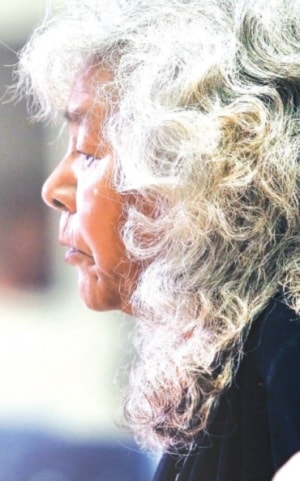More than 500 communities have been visited since the Truth and Reconciliation Commission (TRC) started interviewing former Indian residential school students. Hobbema was the next stop July 24 and 25 in the commission’s meetings to give First Nations a chance to tell their stories — good and bad — of these schools.
Held at the Ermineskin Junior/Senior High School, students had the chance to speak in a public forum or in a private session recorded through video or audio. Chief Wilton Littlechild has been a commissioner with the TRC and he spoke about their efforts. “It’s now been four years that we’ve been on this journey as a commission.”
Littlechild was also a student at the Ermineskin Indian Residential School (EIRS). He was admitted in June 1961 and spent 14 years in the residential school system. His and other people’s stories help shed light on the troubled history of the schools.
“We’ve heard painful, painful stories,” said Littlechild. “But we’ve also had very uplifting stories.
“Many times people shed their tears but other times people laughing, lifting each other up,” he added.
The purpose of the TRC is to remind everyone of the history of these schools and to learn from them. First Nations’ culture and language were not practiced in these schools. “What happens to the children that’s taken and the parents that are left behind? And we’ve heard what happens,” he added.
Since their inception, 4,134 children have died in the schools, Littlechild added. Some died from the natural environment while trying to escape, from beatings and from suicide. He paused to remember these children.
Littlechild introduced commissioner Marie Wilson, who listened to Hobbema’s stories.
“It’s a real special honour to be here,” said Wilson.
She told attendees the public meeting is a sacred space.
A class-action lawsuit was presented by former students to the federal government and to four national churches that ran the schools under contract from the government: the Catholic Church, the Anglican Church, the United Church of Canada and the Presbyterian Church. The $60 million settlement over five years also established the TRC to learn what happened in these schools and to inform Canadians.
“They said, ‘What happened to us as children was not right,’” added Wilson.
She praised members of the church in attendance for having the courage to bear witness to the actions of their forefathers. A symbolic payment was made to former students but was not a large sum of money.
“Let there be no illusions that people suddenly got rich off of this,” she said.
An independent assessment process is also underway for those students who were victims of severe physical and sexual abuse. They will receive payment for their suffering.
These public hearings give the TRC a way to pass on the history of residential schools to the public.
“In knowing the truth Canada would wake up to itself, would wake up to its own history and those who shared their truths, who have been living in quiet painful silence for decades would find a place to move forward in their feelings,” stated Wilson.
Reconciliation can come from people telling their stories, she added.
“This is not a story about aboriginal people. This is a story about Canada. This is Canada’s history, whether we were taught it or not and most of us were not taught it.”
Damage to students was a long-term effect directed specifically at children of another culture. The harms were not of armed conflict but a “deep, cultural and spiritual conflict.”
The commission is unlike any other in the world and Wilson welcomed those who came to speak. She advised that names not be used of perpetrators unless they went through the courts or have died.
Public statements could be viewed over a live feed on the TRC website at www.trc.ca over the two days.
Approximately 150,000 First Nations were sent to these schools, of them 80,000 are still alive. Victims’ proceeds of the court case went to help fund the TRC and its efforts.
See related story online and in this week’s edition of the Ponoka News.
